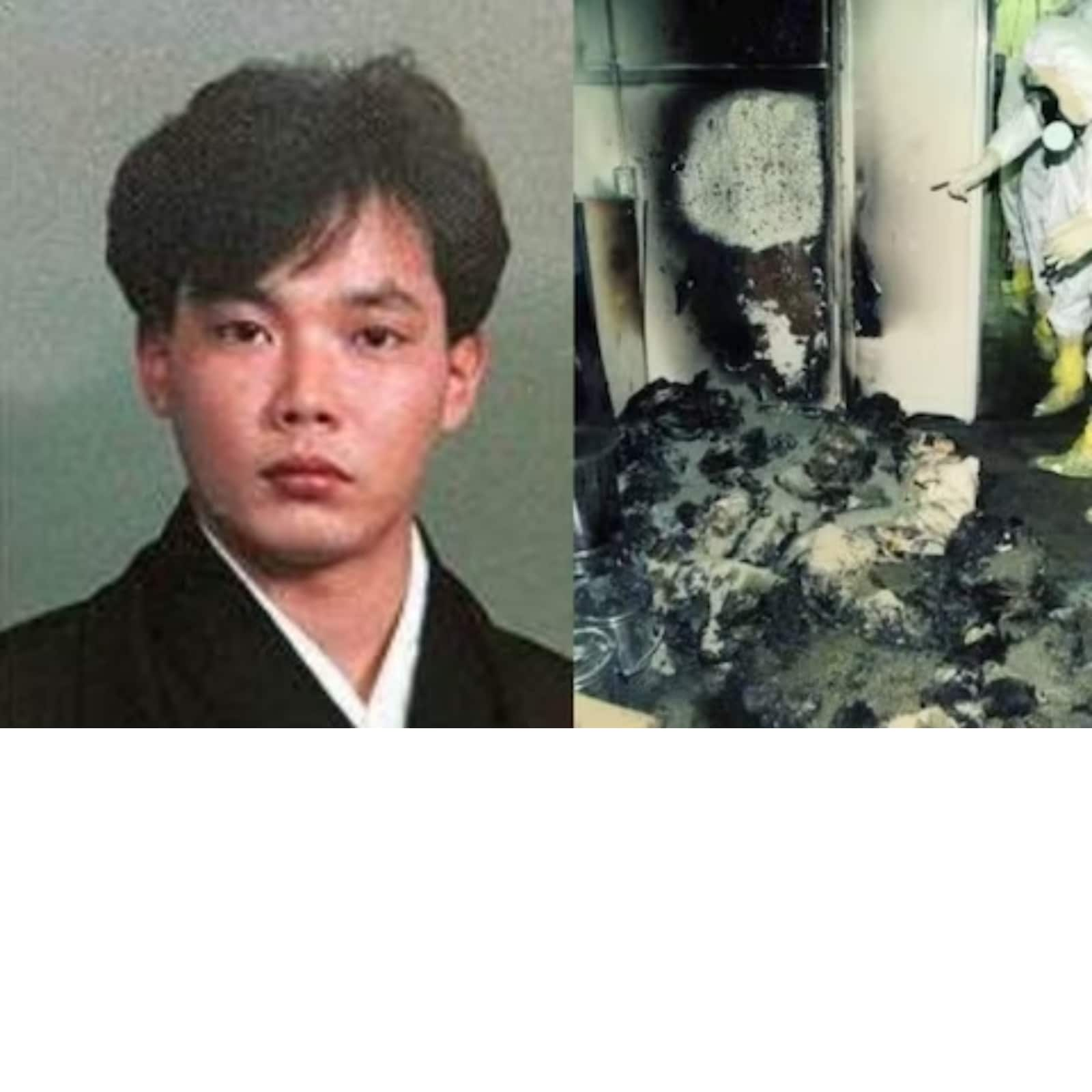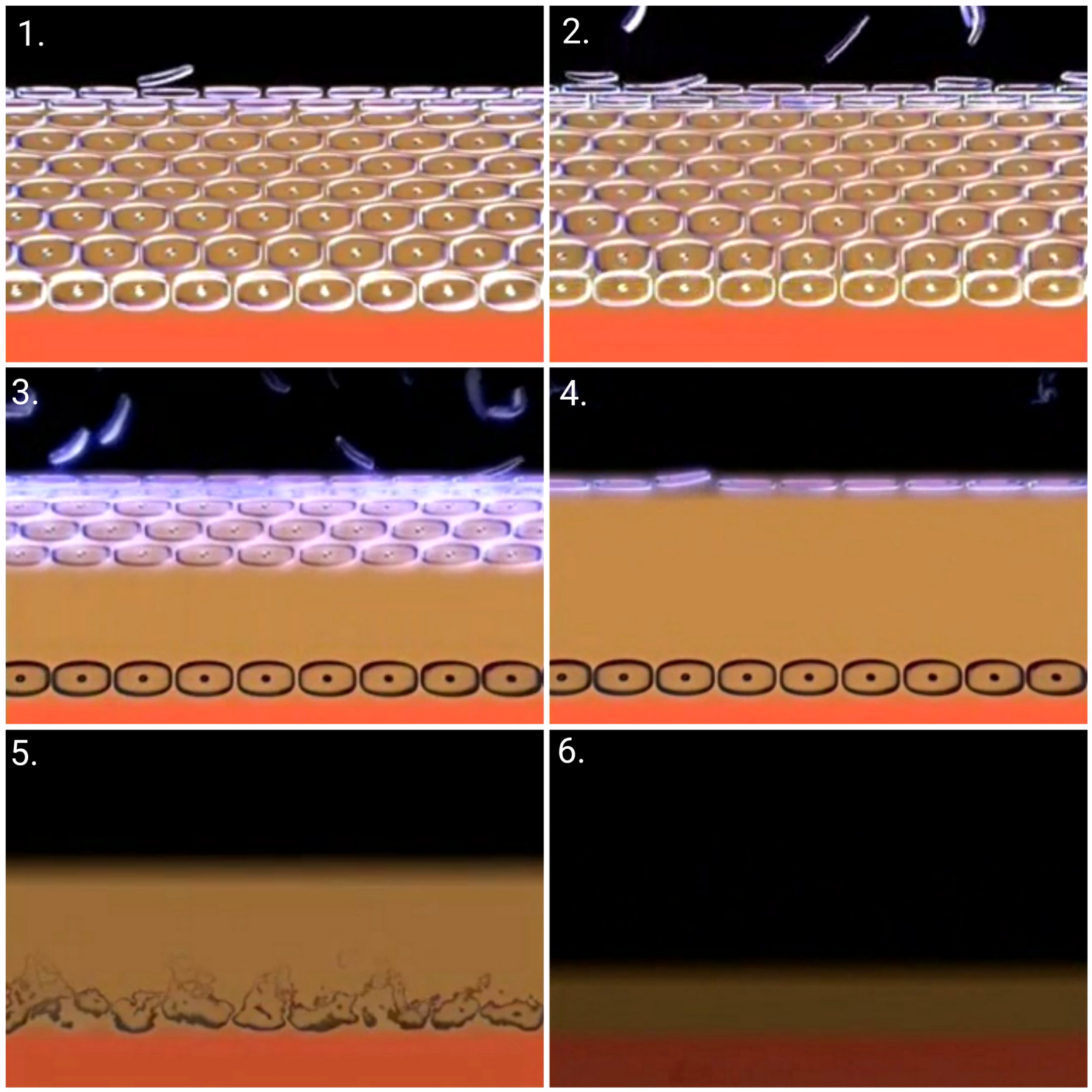Exploring Hisashi Ouchi: The Tragic Story Behind The Photos
Let’s dive straight into this heart-wrenching yet important story. Hisashi Ouchi is a name that resonates deeply with anyone who’s ever studied the tragic consequences of nuclear disasters. His story isn’t just another tale from history—it’s a stark reminder of the dangers that come with playing with forces we don’t fully understand. The world stopped and watched as Hisashi became a symbol of the catastrophic effects of radiation exposure. This is more than just a story; it’s a wake-up call for all of us.
Now, you might be thinking, why should I care about something that happened so long ago? Well, the truth is, Hisashi’s story is still relevant today. With the increasing reliance on nuclear energy and the ongoing threat of nuclear weapons, understanding what happened to Hisashi Ouchi can help us appreciate the risks we face and the precautions we must take. This isn’t just history—it’s a lesson for the future.
Before we get too deep into the details, let’s set the stage. In 1999, a small town in Japan became the center of international attention when a nuclear accident occurred at the Tokaimura nuclear plant. Among the victims was Hisashi Ouchi, whose harrowing ordeal was captured in photos that shocked the world. These images didn’t just show a man suffering—they exposed the raw, brutal truth about radiation sickness. So, buckle up, because this is going to be an emotional ride.
- Scary Facts About Taurus Women Unveiling The Mystique
- Hdhub4ucom Movie Your Ultimate Destination For Highquality Entertainment
Biography of Hisashi Ouchi
Who Was Hisashi Ouchi?
Before we dive into the tragedy, let’s take a moment to remember the person behind the headlines. Hisashi Ouchi was a 35-year-old worker at the JCO nuclear fuel processing plant in Tokaimura, Japan. Like many of us, he had dreams, ambitions, and a family waiting for him at home. But on September 30, 1999, everything changed in an instant.
Here’s a quick breakdown of Hisashi’s life:
| Full Name | Hisashi Ouchi |
|---|---|
| Date of Birth | March 26, 1964 |
| Occupation | Nuclear Plant Worker |
| Place of Incident | Tokaimura, Japan |
| Date of Incident | September 30, 1999 |
| Date of Death | December 21, 1999 |
Hisashi wasn’t just a worker; he was a husband and a son. His life was tragically cut short by a preventable accident, leaving behind a legacy that continues to shape how we think about nuclear safety.
- The Vegamovies Your Ultimate Streaming Hub For Movie Lovers
- What Happened To Dennis Tissington The Untold Story That Left Everyone Shocked
The Tokaimura Nuclear Accident: A Brief Overview
Alright, let’s rewind to September 30, 1999. The Tokaimura nuclear accident is one of the worst nuclear disasters in history, and it all started with a simple mistake. Workers at the JCO plant were mixing uranium in a precipitation tank when they accidentally exceeded the critical mass threshold. This triggered an uncontrolled nuclear chain reaction, releasing massive amounts of radiation into the surrounding area.
Here’s the kicker: the workers weren’t properly trained for the task they were performing. Basic safety protocols were ignored, and the result was catastrophic. Hisashi Ouchi, along with two other workers, was directly exposed to lethal doses of radiation. The world watched in horror as the consequences unfolded.
The Photos That Shocked the World
Now, let’s talk about the photos. These images aren’t just documentation of an accident—they’re a visual representation of the devastating effects of radiation exposure. Hisashi Ouchi’s body was so ravaged by radiation that his skin began to peel off, his internal organs were failing, and he was in constant pain. The photos showed a man who looked almost unrecognizable, and they served as a grim reminder of the dangers of nuclear energy.
But why were these photos so impactful? For starters, they humanized the tragedy. It’s one thing to hear about radiation sickness, but it’s another thing entirely to see it. The world saw Hisashi’s suffering and couldn’t look away. These images sparked debates about nuclear safety, accountability, and the ethics of using nuclear technology.
What Happened to Hisashi Ouchi?
After the accident, Hisashi Ouchi was rushed to the University of Tokyo Hospital, where doctors tried everything in their power to save him. He received multiple blood transfusions, skin grafts, and experimental treatments, but nothing could stop the damage that had already been done. His body was breaking down from the inside out.
Here’s a timeline of Hisashi’s battle:
- September 30, 1999: The accident occurs, and Hisashi is exposed to a lethal dose of radiation.
- October 1999: Hisashi undergoes multiple surgeries and experimental treatments.
- November 1999: His condition deteriorates rapidly as his organs begin to fail.
- December 21, 1999: Hisashi passes away after 83 days of suffering.
Hisashi’s story is a testament to the resilience of the human spirit, but it’s also a tragic reminder of the consequences of negligence.
Understanding Radiation Sickness
So, what exactly is radiation sickness? It’s a condition caused by exposure to high levels of ionizing radiation, and it can have devastating effects on the body. Symptoms include nausea, vomiting, skin burns, and organ failure. In Hisashi’s case, the radiation dose he received was so high that it caused irreparable damage to his cells and tissues.
Here are some key facts about radiation sickness:
- Acute radiation sickness occurs when the body is exposed to large doses of radiation over a short period of time.
- Chronic radiation sickness develops over time due to prolonged exposure to lower levels of radiation.
- There is no cure for radiation sickness, but supportive care can help alleviate symptoms and improve quality of life.
Understanding the science behind radiation sickness is crucial if we want to prevent future tragedies like the one that befell Hisashi Ouchi.
The Impact on Tokaimura and Beyond
The Tokaimura nuclear accident had far-reaching consequences that extended beyond the immediate victims. The town of Tokaimura was evacuated, and thousands of people were displaced. The Japanese government faced intense scrutiny over its nuclear safety regulations, and public trust in nuclear energy plummeted.
Here’s a look at the broader impact:
- Public Perception: The accident led to widespread fear and mistrust of nuclear energy.
- Regulatory Changes: Japan implemented stricter safety protocols and increased oversight of nuclear facilities.
- Global Awareness: The incident sparked global discussions about nuclear safety and the need for international cooperation.
Hisashi Ouchi’s story became a catalyst for change, and it continues to influence nuclear policy around the world.
Lessons Learned from the Tragedy
So, what can we learn from Hisashi’s tragic story? For starters, we need to prioritize safety above all else. The Tokaimura accident was a textbook example of what happens when corners are cut and protocols are ignored. Here are some key takeaways:
- Training Matters: Workers must be properly trained to handle dangerous materials.
- Accountability is Key: Companies and governments must be held accountable for their actions.
- Prevention is Better Than Cure: Investing in safety measures can prevent disasters before they happen.
Hisashi’s legacy lives on in the lessons we’ve learned from his tragedy.
Memorializing Hisashi Ouchi
Hisashi Ouchi’s story is one that will never be forgotten. Memorials and tributes have been erected in his honor, and his name continues to be mentioned in discussions about nuclear safety. But how do we ensure that his memory isn’t just relegated to history books?
Here’s what we can do:
- Education: Teach future generations about the dangers of nuclear energy and the importance of safety.
- Advocacy: Support organizations working to promote nuclear safety and disarmament.
- Remembrance: Honor Hisashi’s memory by continuing to advocate for a safer world.
Hisashi’s story isn’t just about tragedy—it’s about hope and the possibility of creating a better future.
Expert Opinions and Insights
To get a deeper understanding of Hisashi’s story, we turned to experts in the field of nuclear safety. Dr. Hiroshi Suzuki, a radiation specialist at the University of Tokyo, shared his insights:
“Hisashi Ouchi’s case was unlike anything we had ever seen. The level of radiation exposure was so high that it caused irreversible damage to his body. This incident highlighted the urgent need for stricter safety measures and better training for workers in the nuclear industry.”
Dr. Maria Rodriguez, a nuclear policy analyst, added:
“The Tokaimura accident was a wake-up call for the global community. It showed us that even in a technologically advanced country like Japan, accidents can happen if proper precautions aren’t taken. We must continue to push for transparency and accountability in the nuclear industry.”
Referencing Trusted Sources
Here are some trusted sources that provide additional information on Hisashi Ouchi’s story:
These sources offer valuable insights into the Tokaimura accident and its impact on the world.
Conclusion: Honoring Hisashi’s Legacy
As we reflect on Hisashi Ouchi’s tragic story, it’s important to remember the lessons we’ve learned. Hisashi’s suffering was a stark reminder of the dangers of nuclear energy, and it’s up to us to ensure that such tragedies never happen again. By prioritizing safety, holding those in power accountable, and advocating for a safer world, we can honor Hisashi’s memory in the best possible way.
So, what can you do? Leave a comment below sharing your thoughts on Hisashi’s story. Share this article with your friends and family to spread awareness about nuclear safety. Together, we can create a world where accidents like the one in Tokaimura are a thing of the past.
Table of Contents
- Biography of Hisashi Ouchi
- The Tokaimura Nuclear Accident: A Brief Overview
- The Photos That Shocked the World
- What Happened to Hisashi Ouchi?
- Understanding Radiation Sickness
- The Impact on Tokaimura and Beyond
- Lessons Learned from the Tragedy
- Memorializing Hisashi Ouchi
- Expert Opinions and Insights
- Conclusion: Honoring Hisashi’s Legacy
Article Recommendations



Detail Author:
- Name : Kody Stokes V
- Username : jerde.lorenza
- Email : febert@toy.com
- Birthdate : 1989-01-11
- Address : 352 Leannon Pike Kundeshire, NE 05815
- Phone : (262) 242-5193
- Company : Thompson-Champlin
- Job : Communications Equipment Operator
- Bio : Praesentium ut ut aut eius. Ad voluptatem vitae velit. Quisquam explicabo id laboriosam voluptatem non odio natus. Exercitationem ullam non ut.
Socials
facebook:
- url : https://facebook.com/keeblerc
- username : keeblerc
- bio : Ratione molestiae velit nesciunt necessitatibus natus.
- followers : 2497
- following : 705
instagram:
- url : https://instagram.com/ceceliakeebler
- username : ceceliakeebler
- bio : Vel eaque magnam sed explicabo et pariatur hic. At non est quibusdam sint.
- followers : 2781
- following : 2912